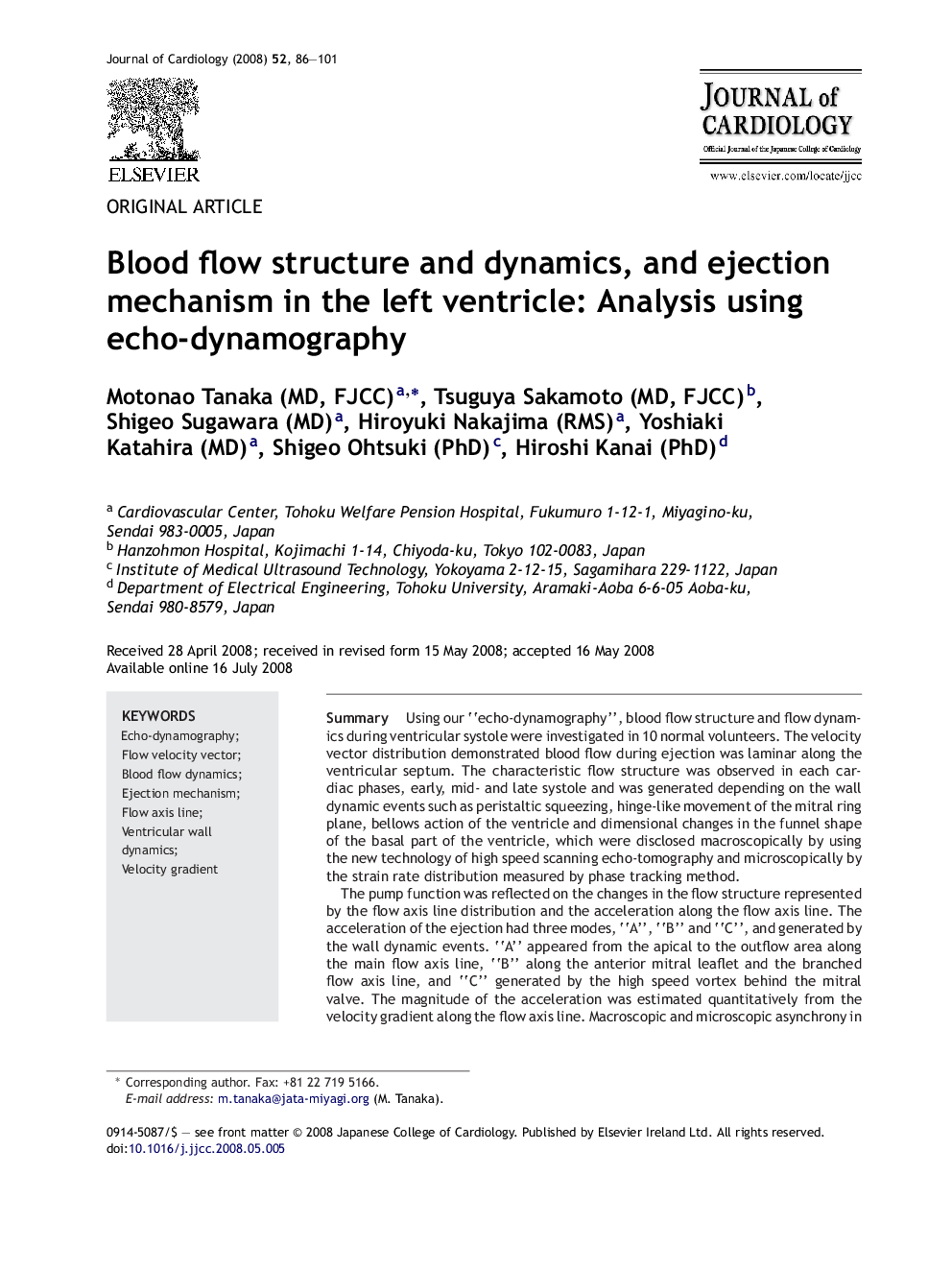| Article ID | Journal | Published Year | Pages | File Type |
|---|---|---|---|---|
| 2963829 | Journal of Cardiology | 2008 | 16 Pages |
SummaryUsing our “echo-dynamography”, blood flow structure and flow dynamics during ventricular systole were investigated in 10 normal volunteers. The velocity vector distribution demonstrated blood flow during ejection was laminar along the ventricular septum. The characteristic flow structure was observed in each cardiac phases, early, mid- and late systole and was generated depending on the wall dynamic events such as peristaltic squeezing, hinge-like movement of the mitral ring plane, bellows action of the ventricle and dimensional changes in the funnel shape of the basal part of the ventricle, which were disclosed macroscopically by using the new technology of high speed scanning echo-tomography and microscopically by the strain rate distribution measured by phase tracking method.The pump function was reflected on the changes in the flow structure represented by the flow axis line distribution and the acceleration along the flow axis line. The acceleration of the ejection had three modes, “A”, “B” and “C”, and generated by the wall dynamic events. “A” appeared from the apical to the outflow area along the main flow axis line, “B” along the anterior mitral leaflet and the branched flow axis line, and “C” generated by the high speed vortex behind the mitral valve. The magnitude of the acceleration was estimated quantitatively from the velocity gradient along the flow axis line. Macroscopic and microscopic asynchrony in the myocardial contraction and extension appeared systematically in the local part of the ventricular wall, which was helpful for making the flow structure and for performing the smooth pump function.
